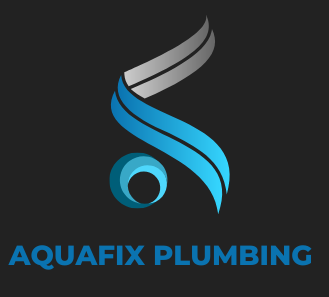When Disaster Strikes: Your Step-by-Step Guide to Handling Commercial pipe burst steps in Your Durban Business
The sudden eruption of water from a burst pipe can feel like a crisis, especially when it impacts your business operations. For small to medium-sized enterprises in Durban, where resources might be stretched and in-house facilities management is uncommon, knowing exactly what to do in those critical first moments is paramount. This guide provides a clear pathway through the chaos, empowering you to take control and minimize potential damage.
1. Immediate Action: Shutting Down the Water Flow – Your Top Priority
The instant you notice a burst pipe, your primary concern must be stopping the water supply. Every second that water continues to flow increases the potential for damage to your premises, stock, and equipment. Locate your main water shut-off valve immediately…
2. Electrical Safety: Power Down the Affected Area
Water and electricity are a lethal combination. Before you step into any standing water or attempt to move items, ensure your safety by disconnecting the electrical supply.
3. Containing the Damage: Act Fast to Limit the Spread
While waiting for a plumber, act fast to limit water damage by soaking up excess water, catching drips with containers, and redirecting flow to drains. Protect nearby valuables by raising furniture and covering electronics. Quick action can reduce long-term damage and repair costs.
4. Your Trusted Partner: Contacting a Local Durban Plumbing Expert
When a pipe bursts, quick action is essential. Reach out to a trusted Durban plumber who specializes in commercial plumbing and offers emergency services. Provide detailed information about the issue so they can respond efficiently. Having a reliable plumber on call ensures faster repairs, minimizes damage, and offers peace of mind during emergencies.
5. Documenting the Incident: Essential for Insurance Claims
Once the water flow is stopped, thoroughly document the damage for insurance purposes. Take clear photos and videos of all affected areas and items, including close-ups and wide shots. Create a detailed inventory listing damaged items, their value, and the extent of the damage. Include receipts or serial numbers if available. Record the date, time, and how the incident occurred. Keep everything organized digitally to streamline your insurance claim process.
6. Notifying Your Insurer: Starting the Claims Process
Promptly contact your business insurance provider to report the burst pipe incident, providing them with all the relevant details such as the time of the incident, what areas were affected, and any immediate steps you’ve taken to control the damage. Be ready to share photographs, videos, and a written inventory of damaged assets to support your claim. Ask your insurer about the next steps in the claims process, including whether an assessor will be sent out and what documentation is required to move forward efficiently.
7. Drying and Ventilation: Preventing Secondary Damage
After the plumber repairs the burst pipe and most water is removed, focus on drying and ventilating the area to prevent mold and mildew. Open windows and use fans and dehumidifiers to remove moisture from walls, floors, and ceilings. Properly check all affected areas, including hidden spaces, to ensure no moisture remains. Quick and effective drying minimizes long-term damage and health risks, helping your business return to normal operations.
8. Comprehensive Damage Assessment and Professional Repairs
Once the area is dry, carefully inspect for hidden damage like warped floors, stained walls, or lingering moisture. Bring in professionals to assess structural, electrical, and plumbing issues. Get detailed repair quotes and ensure all work is done to a high standard so your business can safely resume operations.
9. Reviewing and Refining Your Emergency Plan
Use the incident to assess how well your business handled the emergency and where improvements can be made. Update your emergency response plan, ensure key contact info is accessible, and train your team on procedures. Simple changes like labeling shut-off valves and keeping emergency supplies on hand can make future responses more effective and less stressful.
10. Proactive Prevention: Minimising Future Risks
After dealing with a burst pipe, businesses should focus on prevention by scheduling regular plumbing inspections, installing leak detection devices, insulating exposed pipes, and training staff to recognize early warning signs. These proactive steps can help avoid future plumbing emergencies and protect your operations.
faq
How do you deal with a broken pipe?
Shut off the main water supply immediately, contain any leaking water to prevent further damage, and contact a qualified plumber experienced with commercial properties in Durban. Document the damage for insurance purposes and follow up with cleanup and repairs promptly.
How do you prevent pipe bursts?
To prevent pipe bursts, ensure proper insulation, especially in areas exposed to cold weather, maintain a consistent temperature in your home, regularly inspect pipes for leaks or wear, and keep the water pressure balanced. Additionally, allow faucets to drip in extreme cold and shut off exterior water sources before winter.
signs that your commercial property may need a plumbing upgrade:
Frequent Plumbing Repairs and Issues
Constantly fixing leaks, clogs, or other plumbing problems could indicate your system is outdated and needs an upgrade to avoid further issues.
Low Water Pressure
If you’re experiencing low water pressure in multiple areas, it’s often a sign that the pipes are corroded or blocked, requiring an upgrade.
Foul Odors
Bad smells from drains or pipes can signal blockages, leaks, or deteriorating plumbing that needs attention and potentially an upgrade.
plumbing contractors
If you’re dealing with a burst pipe in your business, don’t hesitate to reach out. Our team is ready to provide fast, professional repairs to get your business back on track. Contact us today for reliable plumbing solutions!


Recent Comments